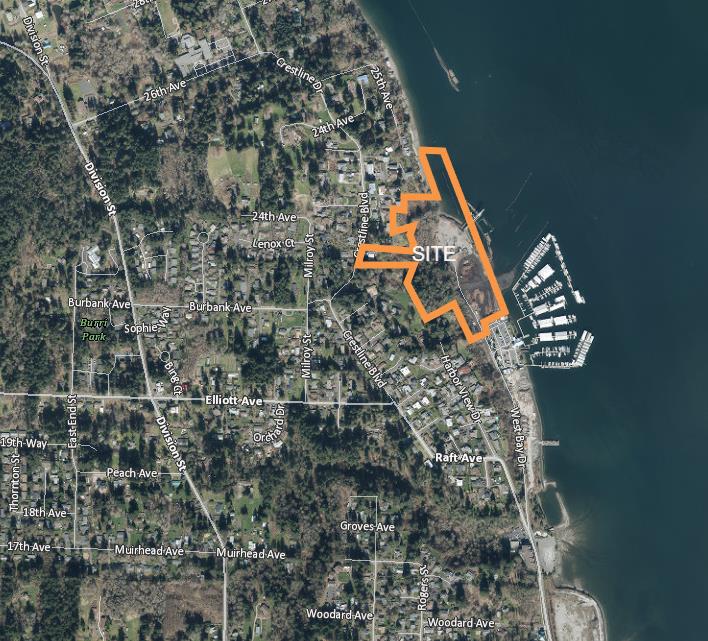A State Environmental Policy Act (SEPA) was open for public comment for the removal of contaminated sediments at the former Dunlap Towing Company on 2003 West Bay Drive NW. The Dunlap remediation site is north of the proposed West Bay Yards project just past Tugboat Annie’s and West Bay Marina.
This project is not the first contaminated sediment remediation that has been done along the former industrial West Bay Drive. Reliable Steel and Hardel Lumber were one of several industrial sites once active on the waterfront. Their legacy includes sediments and wood debris laden with dioxins, furans and petroleum substances. For this reason, remediation of these sites requires more rigorous methods to protect the public health and the environment.

History of the site
The Dunlap property was originally a lumber mill in 1919, and between 1919 and 1966 operated as a sawmill, veneer plant and stud mill. A hog fuel burner also operated on the site at that time. From the 1940’s through the winter of 2022, it was a log sorting and storage yard, where bundles of logs were removed from the water and stored on upland areas to dry before being loaded onto trucks. A small percentage of logs were transferred into the water and towed to a mill in Everett. Over the years, wood debris and sediments from log handlings have accumulated near the load ramp and are impeding vessel operations and the use of several boat slips at the West Bay marina. Dredging will remove the wood debris, restore the area to native soil levels and restore access to these boat slips. The work will take about 2 weeks to complete and cost about $650,000.
The Work Plan
Because of the presence of endangered salmon and orcas in Puget Sound, all work done in its waters requires additional federal consultation with US Fish and Wildlife and the National Marine Fisheries Services, part of the National Oceanographic and Atmospheric Agency (NOAA), to comply with federal law. Work is planned during appropriate ’fish windows’ to avoid adverse impacts to migrating salmon. This project was also reviewed by the EPA to determine that exposed sediment surfaces would meet safety levels after dredging.
Sediment analysis on the site in 2015 found that dioxin levels were 229 and 159 TEQ (toxic equivalency) which is significantly higher that the mean Budd Inlet surface sediment concentration of 19.1 TEQ, as found in the 2008 Budd Inlet Sediment Characterization Study, or the 4 TEQ recommended as safe for disposal. High levels of polycyclic aromatic hydrocarbons and phenols were also detected. Because of these elevated concentrations, it was determined that all wood waste must be removed until native sediments are reached, and be disposed at an approved upland contaminated waste disposal site.
While the SEPA and consultant reports do address water quality issues related to the project, they do not address air quality issues. Part of the dredge disposal plan is to place dredged material in an on-site holding area where it will be dewatered. Public comments to the City from Ms. Laurie Gneiding, a toxicologist and certified environmental professional (CEP) with 39 years of experience, described the possibility of dried sediments, along with the dioxins and other contaminants, becoming airborne from this holding area and blowing east across West Bay Marina and Tugboat Annie’s, or north, west and south to offices and residential homes. She also recommended decontaminating dump trucks prior to leaving the site so as not to spread the mud and soil onto streets where it might also become airborne. She suggested that the City require Dunlap to “conduct real-time air monitoring for both particulates and gases at downwind locations for the protection of local residents, on-site and offsite workers and the environment.”
Clean up of this site is a worthy goal, and one which has been in the works since 2015. Ultimately, it should improve habitat and water quality in Puget Sound. The City will make a SEPA determination in May 2024 that hopefully includes Ms. Gneiding’s recommendations. Any questions can be directed to City planner Lydia Moorehead at lmoorehe@ci.olympia.wa.us
Be First to Comment